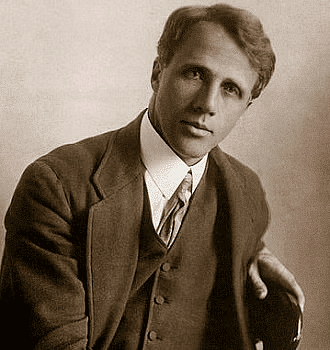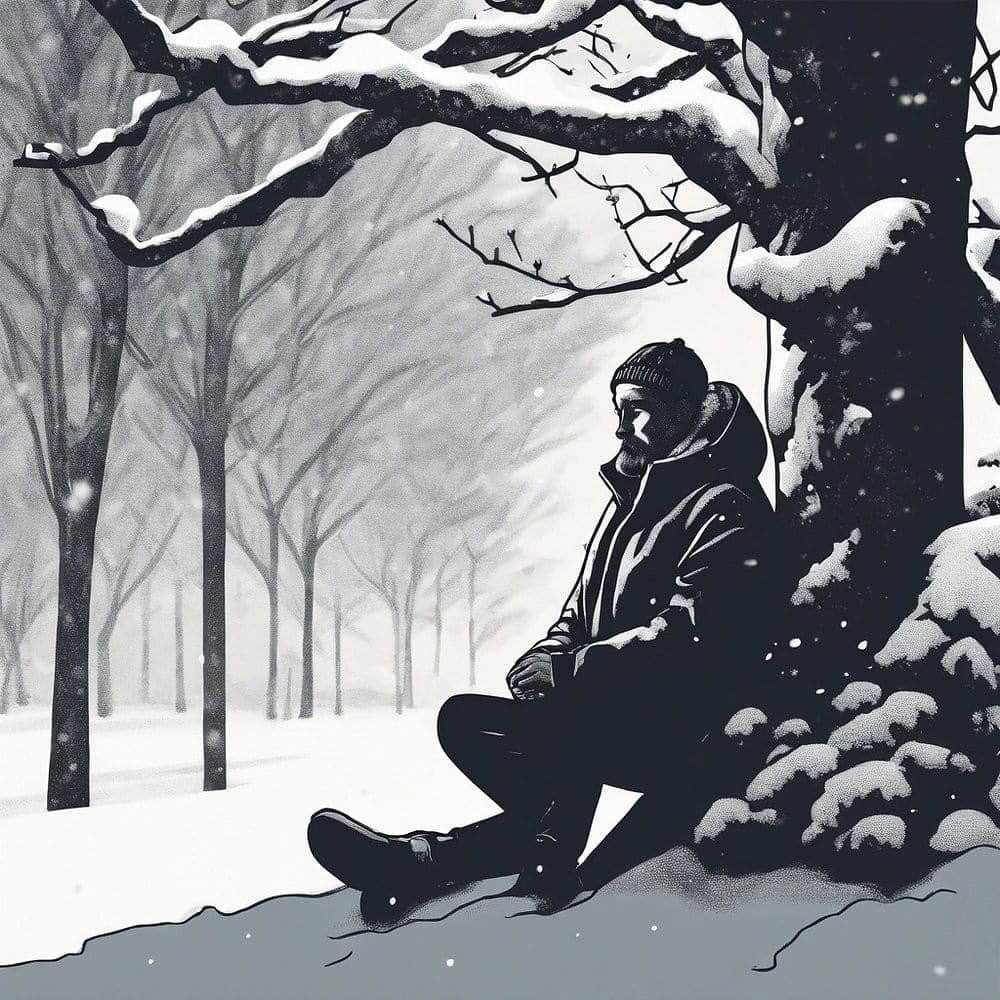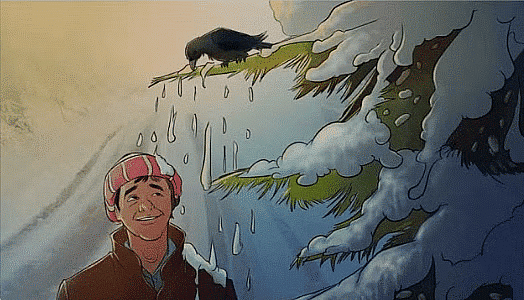Dust of Snow Summary Class 10 English First Flight Chapter 1
| Table of contents |

|
| About the Poet |

|
| Key Points of the Poem |

|
| Detailed Summary |

|
| Theme/ Message |

|
| Literary Devices |

|
| Difficult Words |

|
About the Poet
Robert Lee Frost (March 26, 1874 – January 29, 1963) was an American poet. His work was initially published in England before it was published in the United States. Known for his realistic depictions of rural life and his command of American colloquial speech, Frost frequently wrote about settings from rural life in New England in the early 20th century, using them to examine complex social and philosophical themes.
Key Points of the Poem
- Dust of Snow is a short but powerful poem. The poem highlights how even a small incident in nature can create a deep impact on a person’s mood and outlook.
- It captures the healing power of nature and its ability to change our perspective towards life.
- Robert Frost uses very simple imagery from nature—a crow, a hemlock tree, and a fall of snow—to convey a powerful lesson about how small things can make significant differences in our outlook.
- At the start, the poet is upset, but the gentle fall of snow instantly lifts his mood.
- By the end, he feels calm, refreshed, and grateful to nature for saving his day from being wasted.
Detailed Summary
Stanza 1
The way a crow
Shook down on me
The dust of snow
From a hemlock tree
In this poem, the poet is talking about a winter’s day when all the treetops were covered with snowflakes. The poet was walking under one such snow-covered tree. This was a Hemlock tree. The hemlock tree is usually associated with poison and toxicity as a poison named hemlock is also derived from it. Thus, this tree cannot be associated with anything positive.
However, a crow came and sat down on this tree suddenly, and because of this sudden motion, the mass of snowflakes from the top fell on the poet like rain. The snowflakes were so light and small that the poet thought they looked like white and immaculate dust particles, though usually not white. This shower of snowflakes from the hemlock tree is the subject matter of this poem since it touched the poet in some way.

Stanza 2
A change of mood
And saved some part
Of a day I had rued.
Now in the second stanza, the poet explains exactly in what way the shower of snowflakes had an effect on him. He says that it changed his mood. Earlier, he had been in a despairing mood but the shower of the snowflakes falling on him all of a sudden gladdened his heart. In addition to this, there was another effect that the shower of snowflakes had on the poet. He says that particular day was one he hadn’t been looking forward to, and it hadn’t been going well either.
He had decided, in his mind, that that particular day would go to waste. However, the shower of dust like snow on his shoulder changed his mind. It made him feel that the day had not been a complete waste. At least some part of that day had been pleasant since it had given him a new experience that he could treasure as well as the material for another one of his wonderful poetic compositions.

Theme/ Message
Theme
1. Healing Power of Nature: Nature can uplift human spirits in the most unexpected ways.
2. Symbolism:
Crow → Often symbolises darkness or ill omen, but here it becomes a source of joy.
Hemlock tree → Symbol of sorrow/negativity, yet it gives a positive experience.
Dust of snow → Small, seemingly unimportant things can have great impact.
3. Optimism: Even gloomy situations can lead to moments of happiness.
4. Change of Mood: The poem emphasizes how perspective can shift instantly.
Message
- This poem conveys the message that nothing in life is small. Even trivial things can bring positive changes in our life.
- If we take things positively in life, situations do change for better. Even the small help or good gestures we do for others make large differences.
Deeper Meaning
The poet may even have been contemplating dark thoughts about life, but this incident reminded him of the value of small joys.
The crow’s action of shaking snow is symbolic of an unexpected good deed, which changes the course of someone’s entire day.
The snow, covering the poisonous hemlock, symbolizes purity and healing that can emerge from darkness.
Literary Devices
- Rhyme Scheme– ababcdcd
Imagery: Visual images like the crow shaking snow from a hemlock tree and the ‘dust of snow’ falling on the poet highlight nature’s impact on mood.
Alliteration: Repetition of initial consonant sounds in closely placed words, e.g.,
Has given my heart
And saved some partSymbolism: The crow and hemlock tree, usually seen as negative, symbolize sorrow and death but are used to show how even grim elements of nature can uplift the mood.
Inversion: When the structure of a sentence is changed by the poet to create a rhyme, the poetic license is called inversion. In stanza 1, the poetic device ‘inversion’ is used.
Enjambment: In enjambment, the same sentence continues to the next line without the use of any punctuation marks.
This poem is very good example of this poetic device. It is used throughout the poem. The lines of stanzas flow to the next line without any punctuation.Metaphor: “Dust of snow” metaphorically compares snowflakes to dust, symbolizing a small but meaningful event.
Synecdoche: The word “heart” is used to represent the poet’s entire emotional state.
Assonance: Repetition of vowel sounds, e.g., the ‘o’ sound in
“Shook down on me.”
Difficult Words
- Dust of snow – very small, fine particles of snow that fall lightly, like dust.
- Shook down – to cause something to fall by shaking. In the poem, the crow shakes the branch, and snow falls.
- Hemlock – a type of tree whose branches are poisonous; symbol of sadness or negativity.
- Give heart – make happy and confident
- Has given my heart – has created an impact on my heart and made me feel happy and confident
- Mood – state of mind
- A change of mood – a change in the present condition of mind
- Saved some part of a day – To make the day better; to rescue the day from being wasted in gloom or regret.
- Rued—regretted deeply, felt sad deeply.
|
61 videos|617 docs|69 tests
|
FAQs on Dust of Snow Summary Class 10 English First Flight Chapter 1
Ans. The poet of the poem "Dust of Snow" is Robert Frost.
2. What is the main theme of the poem "Dust of Snow"?
Ans. The main theme of the poem "Dust of Snow" is finding joy and inspiration in small moments of everyday life.
3. What literary device is used in the poem "Dust of Snow"?
Ans. One literary device used in the poem "Dust of Snow" is personification, where nature is given human-like qualities.
4. What is the significance of the dust of snow in the poem?
Ans. The dust of snow in the poem symbolizes a small, unexpected moment of beauty that can have a profound impact on one's mood and outlook.
5. How does the poet convey the message of finding joy in simple moments in the poem "Dust of Snow"?
Ans. The poet conveys the message of finding joy in simple moments by showing how a small event, like a crow shaking snow off a tree branch, can unexpectedly lift one's spirits and change their perspective.
















